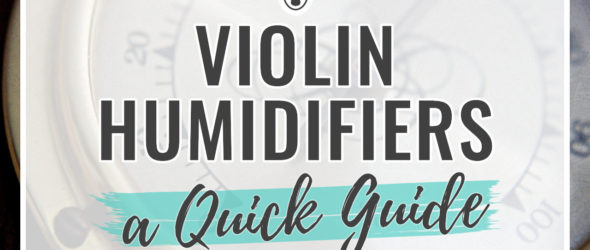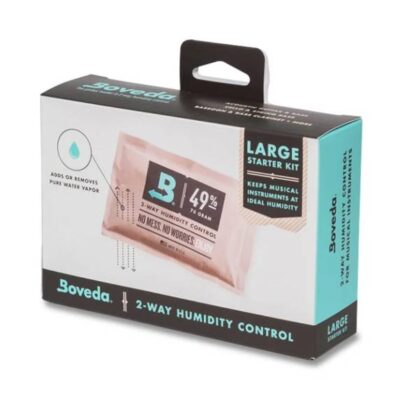Do I need a violin humidifier? – If you ever wondered, read on to find out!
Because violins are made mostly of wood, violinists need to make sure that their precious instruments are properly protected by maintaining humidity levels. If the air around the violin is too dry, the wood can crack.
Ensuring that the proper humidity levels are kept can be done by purchasing a violin humidifier. Read on for my recommendations on when to use them and what your options are.
My Top 2 Best Violin Humidifiers
Here are two violin humidifiers that, in my opinion, are great options available online. One is designed for use directly with your violin and is probably the most popular solution among violinists. The second one is designed to control humidity in your violin case.
Do Violins Need Humidifiers?
The answer is yes, violins do need humidifiers but only under certain circumstances. Humidifiers are not needed at all times – only when the air is extremely dry outside or the relative humidity is changing drastically. Violin humidifiers protect wood instruments and allow for the regularization of moisture in the air.
Under extremely dry conditions, like a dry desert area, a violin humidifier can prevent cracks and keep your violin more in tune. On the flip side, if the humidity level is too high, the wood and the glue can absorb the moisture causing the wood to swell. Either way, if the violin is exposed to extreme changes of moisture, open seams or cracking can occur. In order to avoid that, getting either a case humidifier, a room humidifier, or an internal violin humidifier can help you maintain humidity levels and thus protect your instrument.
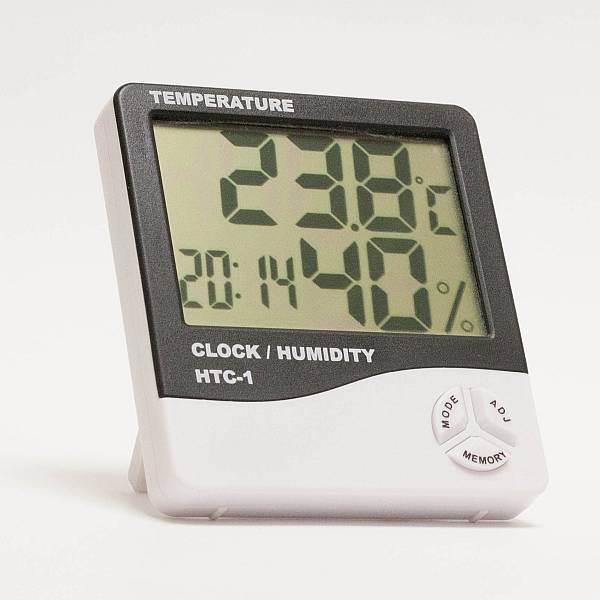
What humidity should a violin be kept at?
The ideal humidity level for a violin is between 40% and 60%. You can check the current humidity level using a hygrometer built in the violin case or a stand-alone device.
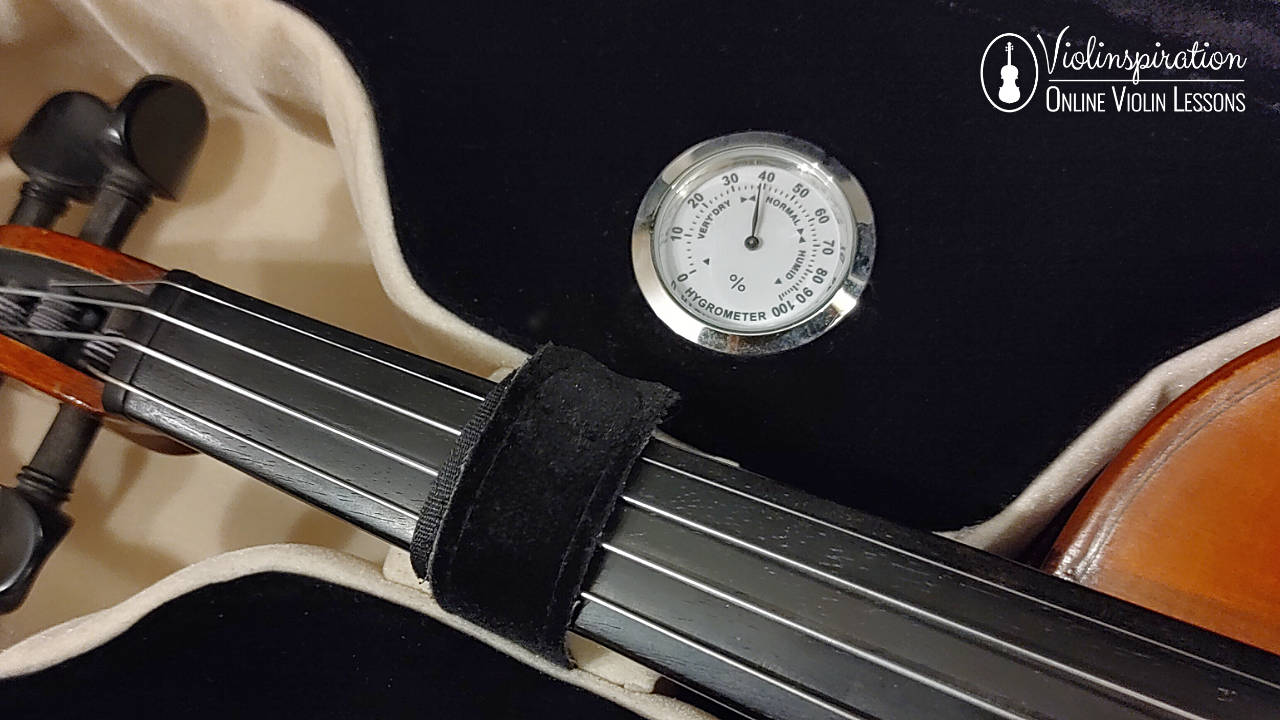
You can control the humidity either externally or internally. Depending on what kind of humidifier you purchase, you will have to either refill it or replace it more or less often.
An external humidifier can be a room humidifier or a smaller case humidifier. The internal option includes a Dampit, which is a small, long sponge that fits inside the instrument and slowly releases moisture, protecting your wood instruments.
Best Violin Humidifiers
Dampit
SPECIFICATION
An internal humidifier that protects your violin by getting submerged in water, soaking up the liquid, and then squeezing it out before inserting the tube into the violin f-holes.
REASONS TO BUY
+ very popular among musicians worldwide
+ very easy to use
+ relatively inexpensive
+ no need for frequent replacement
+ very compact
REASONS TO AVOID
– less reliable than in-case units
– requires frequent refills
– can lead to mold or mildew
– can lead to leakage and damage caused by improper use
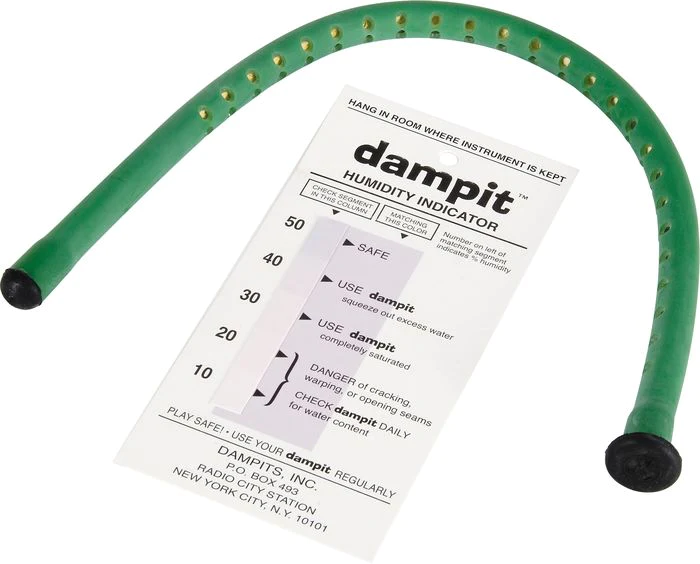
Dampit Violin Humidifier
Support us for more FREE content No extra costs for you Recommended by Violinists
Boveda
SPECIFICATION
A great in-case option that keeps the environment inside the case well-regulated. It both adds and subtracts moisture as needed with its 2-way technology.
REASONS TO BUY
+ does not need any tampering with
+ reliable
+ highly recommended by other violinists
+ goes inside instrument case
REASONS TO AVOID
– will need to be replaced every few months
– costs add up over time
– takes up space in the case
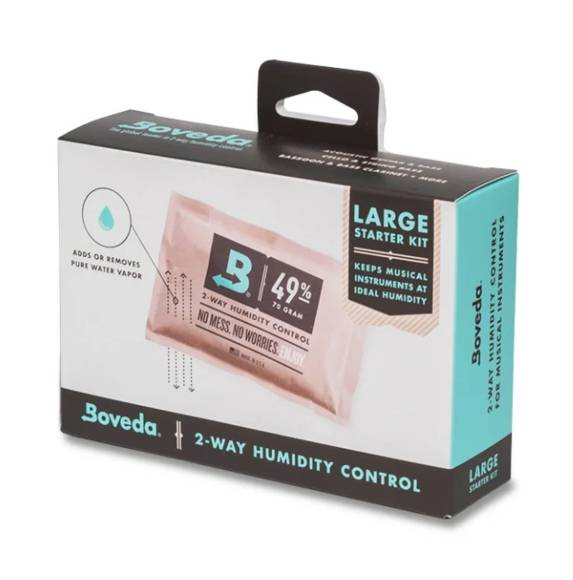
Boveda 2-Way Humidity Control System
Support us for more FREE content No extra costs for you Recommended by Violinists
Stretto Violin Humidifier
SPECIFICATION
An easy-to-use humidifier that goes inside the case, adhering with a velcro strip, and filled with water for a slow-moisture release.
REASONS TO BUY
+ many professional violinists use this
+ still affordable at around $20
+ quick and easy to set up
+ prevents cracks when used correctly
REASONS TO AVOID
– takes up space in the case
– will need to be frequently replaced
– cannot maintain levels if humidity levels are too high
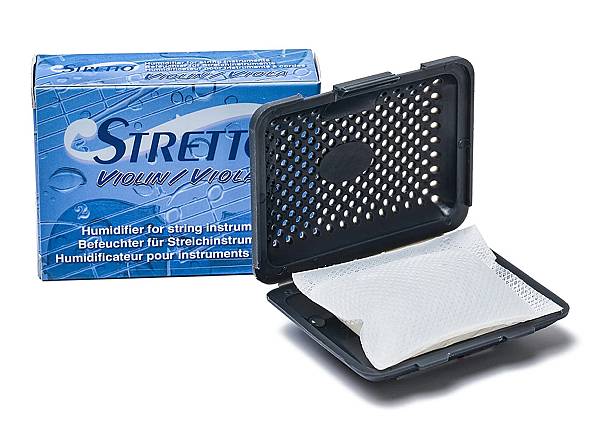
Stretto Humidifier for Violin and Viola
Support us for more FREE content No extra costs for you Recommended by Violinists
D’Addario Violin Humidifier
SPECIFICATION
Another small option for a case-humidifier. This is ideal for protecting wood instruments, particularly woodwind or string instruments. You just moisten the sponge that is inside the black case and squeeze out the excess liquid before putting it in the case.
REASONS TO BUY
+ super small case humidifier
+ releases moisture slowly and evenly
+ safe for more than just violins
+ only need to purchase it once
REASONS TO AVOID
– requires you to refill it and has a margin of user error
– could leak out into the case and damage the wood
– the liquid will need to be frequently replaced
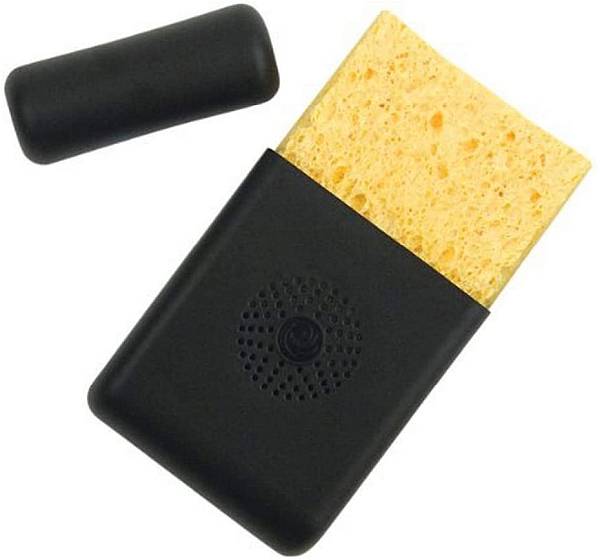
D’Addario Small Instrument Humidifier
Support us for more FREE content No extra costs for you Recommended by Violinists
Oasis Violin Humidifier
SPECIFICATION
The Oasis humidifier fits under the case humidifiers category but this is different in that you can visually see when to refill it (the humidifier shrinks down). It requires you to fill it up with distilled water using a syringe. Inside the humidifier has crystals that reduce the risk of damage from potential leaks. Many violinists opt to use Oasis to protect their instruments because of the ease.
REASONS TO BUY
+ easy-to-use and fill using the syringe
+ low risk of leakage because of an airtight seal
+ very easy to tell when to refill
+ comes with two options to secure it to your case (magnetic strip or clasp)
REASONS TO AVOID
– need to repurchase refill crystals and replace the crystals every year
– will need to fill it every few days
– requires distilled water
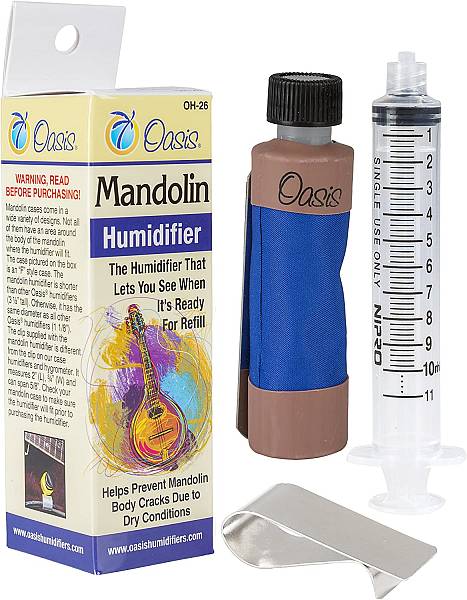
Oasis Humidifier
Support us for more FREE content No extra costs for you Recommended by Violinists
How do you humidify a violin case?
In order to raise humidity within a violin case, you can purchase an in-case humidifier. The most popular options are: Boveda, Stretto, D’Addario, and Oasis. These products require you to fill up the water.
However, you can also ensure the air inside stays high enough through a general room humidifier. This can be much better if you are regularly playing in one specific room but the overall environment you live in is currently too dry.
What are the risks to using a violin humidifier?
The risks of using a humidifier are: the water leaking into or onto your instrument, causing the wood to damage, and the in-case humidifier hitting the violin during transportation if it’s loose or not properly adhered. In general, the biggest risk is caused by human error.
The water leakage can occur by not squeezing enough water out of the sponge before putting it in the violin or case or by not screwing a cap on tight enough. Dampits can be particularly risky because of the fact that they are inserted directly into the instrument, increasing the possibility of causing the wood to warp, however, they are used very frequently.
As you see, there are a few risks associated with using a humidifier. However, don’t let them deter you from protecting your precious string instrument.
